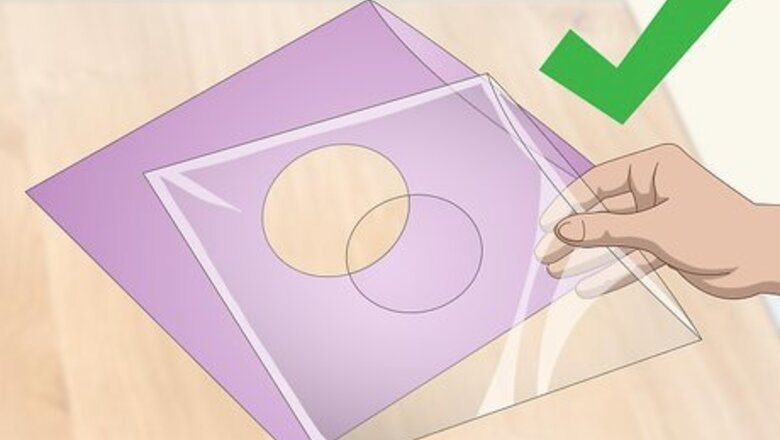
views
Using Protective Sleeves
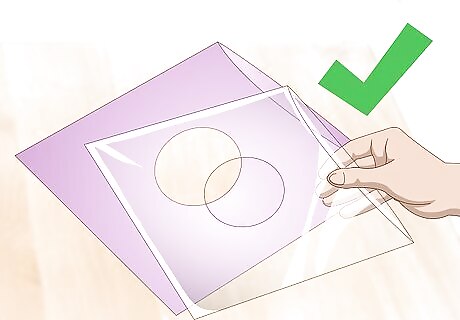
Purchase inner and outer record sleeves. To properly store a vinyl record, you will need sleeves for the disc itself and the case it comes in. Sleeves are typically available from used music and record shops, as well as online retailers like Amazon, Sleeve City USA, and Bags Unlimited. Most vinyl records will require either 7 in (18 cm), 10 in (25 cm), or 12 in (30 cm) sleeves. Avoid cheap inner sleeves as they wear easily and may not provide adequate protection for your disc. Cheap outer sleeves, like those made from polypropylene, will generally not affect the quality of protection, though they may discolor over time.
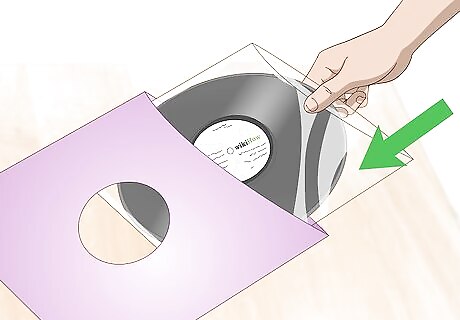
Place each disc in an inner sleeve and each case in an outer sleeve. Remove your record from its case and slip it into an inner sleeve. If the record came with protective factory film, feel free to leave it on. Gently slide the record back into its case, then slip the case into an outer sleeve. Make sure the open side of the sleeve lines up with the open side of the record case.
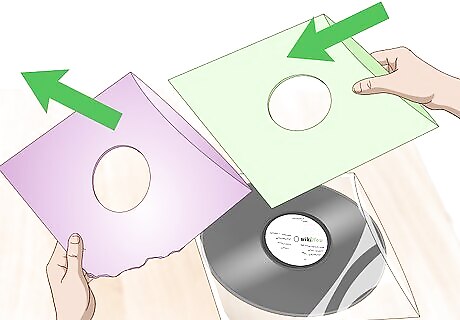
Replace damaged sleeves when necessary. Over time, record sleeves are susceptible to general wear and, in some cases, mold and mildew infestation. To protect your records, replace any sleeves that are damaged or rotten.
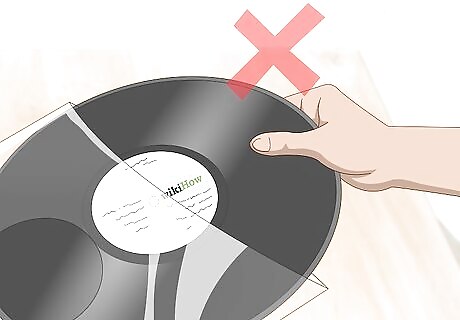
Do not touch the record’s grooves when taking it out to play. The best storage in the world is no match for messy handling. When taking a record out to play, do not touch the grooves. Instead, hold the disc by its edge and center circle. This helps prevent grease and dirt from slipping into the grooves.
Storing with Boxes and Shelves
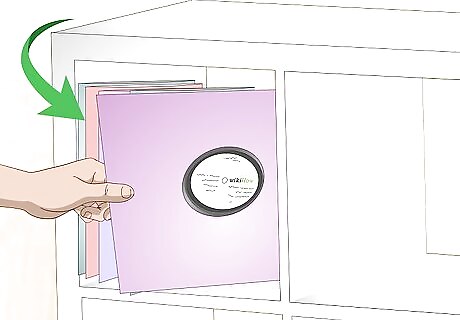
Purchase a display shelf for easy access to your records. A display shelf may be the perfect solution for general music lovers and collectors who want to show off their lot. Look for shelves with long, horizontal rows and short columns about 1 to 2 inches (2.5 to 5.1 cm) taller than your largest album size, allowing you to store more records. For large collections, invest in blank or pre-labeled record dividers to make things easier to sort and navigate.
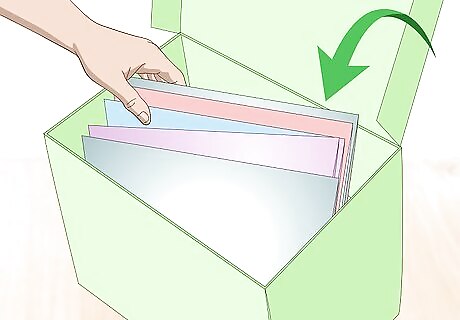
Purchase a storage box to archive your vinyls. If you’re tight on space, plan on travelling, or want to store your records for a long time without using them, try purchasing some storage boxes. For quick, cheap solutions, wooden crates and plastic tubs work great. For something safer but more expensive, look for archival plastic storage tubs and mobile vinyl boxes. Look for square containers that are taller than your largest record by about 1 to 2 inches (2.5 to 5.1 cm).
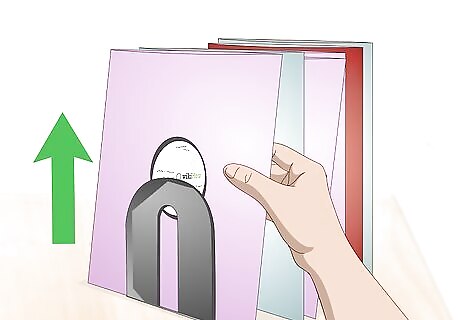
Store your records vertically. When records are stacked on top of each other, the weight distribution will cause lower-level records to warp over time. To prevent this, store your records vertically, keeping weight off the discs. Do not place heavy objects on top of the records. To prevent dust exposure, store your records with the open edge facing in.

Minimize your records’ air exposure. When dealing with vinyl, the best protection often comes from simply keeping your records sealed and covered. When not in use, make sure your records are inside their cases, away from the air and elements. To avoid gathering dust, do not leave a disc on your record player for long periods of time.
Creating a Good Storage Environment
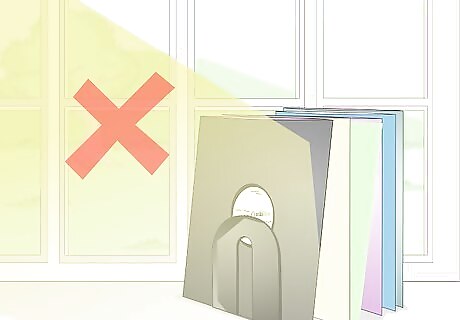
Keep your records away from sunlight. Just like paintings, vinyl sleeves that are kept in the sun will fade and crack over time. To keep the cover art looking vibrant and beautiful, store your records in a shady room away from windows and direct sunlight. Remember: even if you have no front facing vinyls, the sunlight can still affect the edges of your record cases.

Avoid extremely hot or cold areas. When exposed to extreme heat, vinyl records can melt and warp around the edges, making them unplayable. When exposed to extreme cold, your records will become brittle, making them easy to break. If possible, keep your records at just below room temperature, or 50 °F (10 °C), for best results. If your records are exposed to extreme cold, slowly increase the temperature over a period of many hours. Moving suddenly from cold to hot may cause unwanted condensation, ruining the album cover.
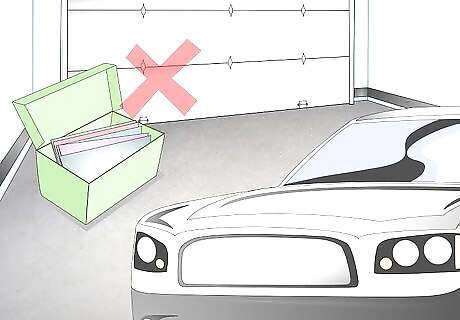
Stay away from extremely humid rooms. Avoid areas that are extremely humid or prone to leaks as they can cause your vinyls to develop mold or mildew. Unless they are sealed and well-insulated, avoid basements, attics, sheds, garages, and similar areas. If possible, store your records in a room with 35% humidity, the amount recommended by professional archivists.
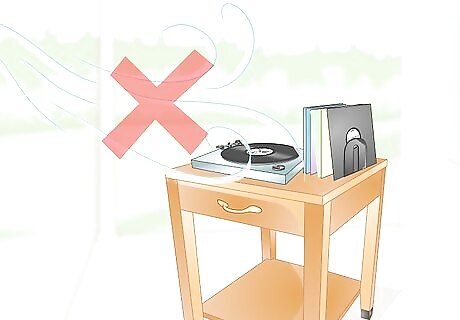
Avoid open, dusty areas. Dust is the primary culprit behind dirty and ruined records. As such, do not store your vinyls in seldom frequented areas exposed to the open air. Instead, make sure your albums are loosely packed together so that only the cardboard edges are exposed to dust. For optimal results, expect to dust the edges of your records about once a week.




















Comments
0 comment